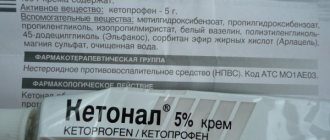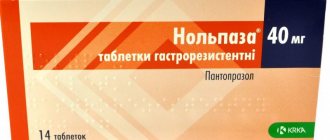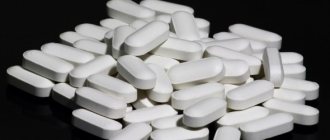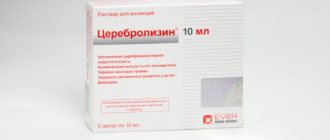Instructions for use EKVATOR®
All warnings below related to the use of individual components also apply to the drug Equator®.
Lisinopril
Arterial hypotension
A marked decrease in blood pressure with the development of clinical symptoms can be observed in patients with a decrease in blood volume and/or sodium content due to diuretics, fluid loss, or for other reasons, for example, increased sweating, prolonged vomiting and/or diarrhea, or severe renin-dependent arterial hypertension. It is necessary that restoration of fluid and/or sodium loss be carried out before starting therapy with Equator®. It is necessary to monitor blood pressure after taking the initial dose. Such conditions apply to patients with coronary artery disease or cerebrovascular diseases, in whom a pronounced decrease in blood pressure can lead to myocardial infarction or stroke.
A transient hypotensive reaction is not a contraindication to subsequent use of lisinopril, which can usually be used immediately after an increase in blood pressure following an increase in blood volume.
Some patients with heart failure with normal or low blood pressure may experience an additional decrease in systemic blood pressure when taking lisinopril. This effect is expected and does not usually require discontinuation of treatment. If hypotension becomes symptomatic, dose reduction or discontinuation of lisinopril may be necessary.
Double blockade of the RAAS
Dual blockade of the RAAS is associated with an increased risk of hypotension, hyperkalemia and renal dysfunction (including acute renal failure) compared with monotherapy. Dual blockade of the RAAS using ACE inhibitors, angiotensin II receptor antagonists or aliskiren cannot be recommended in any patient, especially in patients with diabetic nephropathy.
In some cases, when the combined use of ACE inhibitors and angiotensin II receptor antagonists is absolutely indicated, careful supervision by a specialist and mandatory monitoring of renal function, water and electrolyte balance, and blood pressure are necessary. This applies to the use of candesartan or valsartan as adjunctive therapy to ACE inhibitors in patients with chronic heart failure. Carrying out double blockade of the RAAS under the careful supervision of a specialist and mandatory monitoring of renal function, water-electrolyte balance and blood pressure is possible in patients with chronic heart failure with intolerance to aldosterone antagonists (spironolactone), who have persistence of symptoms of chronic heart failure, despite other adequate therapy .
Arterial hypotension in acute myocardial infarction
Treatment with lisinopril should not be initiated in patients with acute myocardial infarction who are at risk of further serious hemodynamic deterioration after treatment with vasodilators (patients with a systolic blood pressure of 100 mmHg or lower, and those with cardiogenic shock). During the first 3 days after myocardial infarction, the dose of lisinopril should be reduced if systolic blood pressure is 120 mm Hg. Art. or lower. Maintenance doses should be reduced to 5 mg or temporarily to 2.5 mg if systolic blood pressure is 100 mmHg. Art. or lower. If arterial hypotension persists (systolic blood pressure less than 90 mm Hg persists for more than 1 hour), lisinopril should be discontinued.
Aortic and mitral valve stenosis/hypertrophic cardiomyopathy
As with other ACE inhibitors, lisinopril should be administered with caution to patients with mitral valve stenosis and left ventricular outflow tract obstruction (aortic stenosis or hypertrophic cardiomyopathy).
Kidney failure
In renal failure (creatinine clearance <80 ml/min), the initial dose of lisinopril should be adjusted depending on the patient's creatinine clearance and then depending on the patient's response to treatment. During therapy, potassium levels and creatinine concentrations in the blood serum should be monitored.
In patients with heart failure, hypotension after initiation of treatment with ACE inhibitors may lead to further deterioration of renal function. Acute renal failure has been reported in such cases, but is usually reversible.
In some patients with bilateral renal artery stenosis or with arterial stenosis of a solitary kidney who received ACE inhibitors, increases in serum urea and creatinine concentrations were observed, usually reversible when treatment was discontinued. This is especially likely in patients with kidney failure. In the case of concomitant renovascular hypertension, there is an increased risk of developing severe arterial hypotension and renal failure. In such patients, treatment should be initiated under close medical supervision at low doses and the dose titrated carefully. Since treatment with diuretics may contribute to the development of the above conditions, their use should be discontinued and renal function monitored during the first weeks of lisinopril therapy.
In some patients with arterial hypertension without significant preexisting renovascular hypertension, an increase in serum urea and creatinine concentrations was observed, usually slight and transient, especially in cases where lisinopril was used concomitantly with a diuretic. This is especially likely in patients with pre-existing renal failure. A dose reduction and/or discontinuation of the diuretic and/or lisinopril may be required.
In acute myocardial infarction, treatment with lisinopril should not be started in patients with signs of renal failure, which was defined as a serum creatinine concentration exceeding 177 µmol/l and/or proteinuria exceeding 500 mg/24 hours. In case of renal dysfunction during treatment with lisinopril ( serum creatinine concentration exceeds 265 µmol/l or 2 times higher than the corresponding value before treatment), the advisability of discontinuing lisinopril should be considered.
Angioedema
Angioedema of the face, extremities, lips, tongue, vocal folds and/or larynx has been reported in patients taking ACE inhibitors, including lisinopril. In these cases, taking Equator® should be stopped immediately and careful medical observation should be carried out until the symptoms disappear completely.
Swelling of the face, lips and limbs usually goes away on its own, however, antihistamines should be used to reduce the severity of symptoms. Angioedema, accompanied by swelling of the larynx or swelling of the tongue, can be fatal. If swelling of the tongue, pharynx or larynx is detected, which may be the cause of airway obstruction, emergency measures must be immediately initiated. Appropriate measures include:
- use of a 0.1% solution of epinephrine (adrenaline) subcutaneously at a dose of 0.3-0.5 mg or 0.1 mg IV slowly, followed by the use of corticosteroids (IV) and antihistamines and simultaneous monitoring of vital functions.
Angioedema of the intestine has rarely been observed in patients taking ACE inhibitors. Patients complained of abdominal pain (with or without nausea and vomiting); in some cases, no previous facial angioedema was observed and C-1 esterase activity was within normal limits. Angioedema of the intestine was diagnosed according to computed tomography of the gastrointestinal tract or ultrasound, or during surgery; symptoms disappeared after discontinuation of the ACE inhibitor. When conducting a differential diagnosis of abdominal pain in patients taking ACE inhibitors, the development of angioedema of the intestine should be taken into account.
In patients with a history of angioedema not associated with ACE inhibitor use, use of ACE inhibitors may be associated with a higher risk of developing angioedema.
Anaphylactic reactions in patients on hemodialysis
Cases of anaphylactic shock have been reported in patients undergoing hemodialysis using polyacrylonitrile membranes (eg, AN69®) and concomitantly receiving ACE inhibitors, and this combination should be avoided. Patients are recommended to use either a different type of dialysis membrane or an antihypertensive drug of a different pharmacotherapeutic group.
Anaphylactic reactions in patients during LDL apheresis procedures
Rarely, life-threatening anaphylactic reactions have developed in patients receiving ACE inhibitors during LDL apheresis with dextran sulfate. Such reactions can be prevented by stopping the ACE inhibitor before each apheresis procedure.
Desensitization by Hymenoptera venom
Sometimes patients taking ACE inhibitors developed anaphylactic reactions when desensitized by hymenoptera venom (for example, wasps or bees). Such life-threatening situations can be avoided by discontinuing the ACE inhibitor before the desensitization procedure.
Effects on the liver
In rare cases, the use of ACE inhibitors was accompanied by a syndrome that began with cholestatic jaundice or hepatitis and developed into fulminant liver necrosis and, in some cases, led to death. The mechanism of this syndrome is unclear. Patients receiving Equator® who experience jaundice or elevated liver enzymes should discontinue the drug and closely monitor their condition.
Neutropenia/agranulocytosis
Rare cases of neutropenia, agranulocytosis, thrombocytopenia and anemia have been reported in patients receiving ACE inhibitors. In patients with normal renal function and in the absence of other aggravating factors, neutropenia is rare. Neutropenia and agranulocytosis are reversible and disappear after discontinuation of the ACE inhibitor. Equator® should be used with extreme caution in patients with systemic connective tissue diseases, during immunosuppressive therapy, during treatment with allopurinol or procainamide, or a combination of these aggravating factors, especially in the presence of pre-existing renal impairment. Some of these patients developed serious infections, which in some cases did not respond to antibiotic treatment. In such patients, during treatment with Equator®, it is necessary to periodically monitor the number of leukocytes (blood test with leukocyte count). Patients should be warned about the need to inform the doctor about the appearance of the first signs of an infectious disease.
Race
Representatives of the Black race who used ACE inhibitors were more likely to experience angioedema compared to patients of other races.
Like other ACE inhibitors, lisinopril is less effective as an antihypertensive agent in black patients compared to patients of other races. This effect may be associated with a pronounced predominance of low-renin status in black patients with arterial hypertension.
Cough
Cough was frequently observed during the use of ACE inhibitors. As a rule, the cough is non-productive, persistent and stops after discontinuation of the drug. In the differential diagnosis of cough, cough associated with the use of ACE inhibitors must be taken into account.
Surgery/general anesthesia
During surgery or general anesthesia with the use of drugs that cause arterial hypotension, lisinopril can block the formation of angiotensin II associated with the compensatory release of renin.
If arterial hypotension develops as a result of the above mechanism, correction can be made by increasing the volume of blood volume.
Hyperkalemia
An increase in serum potassium levels was observed in some patients receiving ACE inhibitors. Patients at risk for the development of hyperkalemia are patients with renal failure, type 2 diabetes mellitus, acute heart failure, dehydration, metabolic acidosis, or concomitant use of potassium-sparing diuretics, potassium-containing dietary supplements, potassium-containing salt substitutes, or any other drugs that increase potassium levels in the blood. serum (for example, heparin). If simultaneous use with the above drugs is necessary, it is recommended to monitor the potassium content in the blood serum.
Patients with diabetes mellitus
In patients with diabetes mellitus taking oral hypoglycemic drugs or receiving insulin, blood glucose concentrations should be monitored during the first month of treatment with an ACE inhibitor.
Amlodipine
The safety and effectiveness of amlodipine in hypertensive crisis has not been established.
Patients with heart failure
Calcium channel blockers, incl. amlodipine should be used with caution in patients with congestive heart failure as it may increase the risk of cardiovascular complications and mortality.
Use in patients with liver failure
In patients with hepatic impairment, a prolongation of amlodipine T1/2 and an increase in the AUC value are observed, but appropriate dosing recommendations have not been developed. Therefore, amlodipine should be started at the lowest dose in the dosing range; Treatment should be initiated and dose increased with caution. In patients with severe hepatic impairment, slow dosage titration and close medical monitoring may be required.
Elderly patients
Elderly patients with impaired renal function should undergo dose adjustment using lisinopril and amlodipine separately.
During treatment, body weight control and dental supervision are necessary (to prevent pain, bleeding and gum hyperplasia).
Impact on the ability to drive vehicles and operate machinery
Lisinopril
When operating vehicles or machinery, the possibility of dizziness or fatigue should be taken into account.
Amlodipine
Amlodipine may have a slight or moderate effect on the ability to drive vehicles and machines. Due to the possible development of dizziness, headache, fatigue and nausea, the speed of psychomotor reactions may be impaired. Caution is recommended, especially at the beginning of treatment.
Pharmacological properties of the drug Equator
Equator is a combined antihypertensive drug containing two active components. Lisinopril belongs to the group of ACE inhibitors; it reduces the level of angiotensin II and aldosterone in the blood plasma and simultaneously increases the level of bradykinin, which has a vasodilatory effect. Under the influence of lisinopril, peripheral vascular resistance and blood pressure decrease, and IOC and renal blood flow may increase. Heart rate remains virtually unchanged. In patients with hyperglycemia, lisinopril helps restore impaired endothelial function. The antihypertensive effect develops 1 hour after administration, the maximum effect is achieved after 6 hours. The duration of action depends on the dose and is about 24 hours. The effectiveness of lisinopril is maintained with long-term use. When discontinuing therapy, no sharp and intense increase in blood pressure is observed due to drug withdrawal. Although the primary action of lisinopril is through the renin-angiotensin-aldosterone system, its use is also effective when renin levels are low. The use of lisinopril in patients with diabetes mellitus does not cause changes in blood glucose levels. Amlodipine is a calcium ion antagonist, a dihydropyridine derivative. By blocking slow calcium channels of the membrane, it prevents the transmembrane entry of calcium ions into cardiomyocytes and vascular smooth muscle cells. Under its action, vascular tone (arterioles) and peripheral vascular resistance decrease. By dilating arterioles and reducing afterload, amlodipine has an antianginal effect. Due to the fact that it does not cause the development of reflex tachycardia, its use reduces the myocardial oxygen demand. Amlodipine appears to dilate both intact and diseased coronary vessels, improving myocardial perfusion. Amlodipine is well absorbed after oral administration. It is widely distributed in the tissues of the body and is slowly eliminated, which ensures its long-lasting effect and makes it possible to take it once a day for 1 day. In patients with hypertension (arterial hypertension), taking amlodipine once a day significantly reduces blood pressure for at least 24 hours in both the supine and standing positions. The action of amlodipine develops slowly, so the likelihood of developing symptomatic hypotension is small. Amlodipine does not have adverse metabolic effects, including no effect on plasma lipid levels. The drug can be prescribed to patients with asthma, diabetes mellitus and gout. A calcium antagonist can cause an increase in the activity of the renin-angiotensin-aldosterone system, and lisinopril introduced into the drug ensures normalization of the body's response by counter-regulating the renin-angiotensin-aldosterone system. Lisinopril enters the systemic circulation unchanged. The maximum concentration in blood plasma is reached approximately 6 hours after administration. Bioavailability - 29%. Apart from ACE, it does not bind to other plasma proteins. It is not metabolized in the body and is excreted unchanged in the urine. The half-life is 12.6 hours. Free lisinopril is released quickly, and ACE-bound lisinopril is released more slowly, which contributes to the prolonged effect of the drug. In case of kidney disease, excretion slows down, so in this case, a reduction in the dose of the drug may be necessary. Lisinopril is eliminated by hemodialysis. Amlodipine after oral administration is slowly but almost completely absorbed from the digestive tract. Concomitant food intake does not affect its absorption. The maximum concentration in blood plasma is observed 6–10 hours after administration. The bioavailability of amlodipine is 64–80%, the volume of distribution is about 20 l/kg body weight. 95–98% of amlodipine is bound to plasma proteins. Metabolized mainly in the liver to inactive metabolites. About 10% of unchanged substance and 60% of metabolites are excreted in the urine. Elimination is biphasic, the half-life averages 35–50 hours. A stable equilibrium concentration is established after 7–8 days of administration. Amlodipine is not excreted during hemodialysis. The time to reach maximum plasma concentrations is similar in young and elderly patients. In elderly patients, the excretion of amlodipine is slightly reduced, the AUC value and half-life increase. No dose adjustment is required in elderly people. In case of liver pathology, the half-life of amlodipine is prolonged. In case of kidney diseases, the concentration of amlodipine in the blood plasma does not depend on the degree of kidney damage. When taking the drug Equator, there is no interaction between the active components, which is confirmed by pharmacokinetic studies. Important pharmacokinetic parameters (AUC, maximum plasma concentration, time to reach maximum concentration, half-life) did not differ when using active components in combination or separately. The absorption of the active ingredients of Equator does not depend on food intake. Due to the fact that the active components of Equator remain in the body for a long time, the drug can be used once a day.
Contraindications, unwanted effects
Direct contraindications to the use of Equator include the following cases:
- the presence of angioedema, especially caused by previous use of other ACE inhibitors;
- severe aortic stenosis, mitral valve defects;
- clinically significant hypotension;
- obstructive HCM;
- cardiogenic shock;
- periods of gestation and lactation;
- individual intolerance to the components of “Equator”;
- age limit (under 18 years of age, the use of Equator is prohibited due to the lack of studies aimed at determining the effectiveness, tolerability and safety of the drug for this age group).
The following pathologies are considered relative contraindications to the use of Equator:
- cerebrovascular diseases (including such a special case as cerebrovascular insufficiency);
- dysfunction of bone marrow hematopoiesis;
- arrhythmias;
- CHF, IHD;
- autoimmune diseases
- hyperkalemia;
- SD;
- Kidney and liver failure;
- age-related changes;
- patients with a transplanted kidney/kidneys;
- post-infarction state (at least a month after MI);
- on a diet with limited consumption of sodium-containing foods.
Most adverse reactions are mild and fleeting, not requiring discontinuation of Equator intake. The frequency of side effects is comparable to their severity when taking amlodipine/lisinopril separately.
Most often noted:
- Headache (approximately 8% of patients).
- Dry cough (occurs in 5% of patients).
- Dizziness (2 - 3% of patients).
Other side effects, the frequency of which does not exceed 1%, include general weakness, possible dyspeptic symptoms (nausea, diarrhea, vomiting), orthostatic hypotension, swelling (mainly in the legs), skin rashes/itching, and chest pain. Angioedema is observed in 0.05 - 0.1% of cases of Equator therapy. In such cases, the drug should be stopped immediately and the patient monitored until the symptoms completely disappear.
Side effects in terms of systems and organs:
- CVS: arrhythmias (most often tachycardia due to the hypotensive effect of the drug), vasculitis, increased symptoms of heart failure, very rarely - orthostatic hypotension.
- Hematopoietic organs: neutropenia, erythrocytopenia; under the influence of an ACE inhibitor, agranulocytosis cannot be excluded. Leukopenia sometimes occurs; long-term therapy can lead to an increase in the concentration of hamatocrit and hemoglobin.
- Gastrointestinal tract: dyspeptic symptoms, feeling of thirst and dryness in the mouth, intestinal dysfunction, exacerbation of pancreatitis, possible discomfort and pain in the abdomen, loss of appetite. Sometimes gum hyperplasia, flatulence, and symptoms of gastritis appear.
- Skin: itching, dermatitis, profuse sweating, the appearance of pigmented spots, xeroderma.
- Genitourinary system: abnormally frequent urination, kidney dysfunction (up to acute failure), possible uremia, as well as deterioration of sexual function.
- Nervous system: weakness, headache, dizziness, attacks of daytime sleepiness, asthenia, general weakness, frequent mood swings, feeling of a rush of blood in the facial area, fainting, sleep disturbances, depressive and anxiety states, convulsions, memory loss.
- Immune system: lupus syndrome, myalgia, febrile conditions, erythema multiforme.
- Musculoskeletal system: some forms of arthrosis, myalgia, involuntary muscle cramps may be observed.
- Respiratory system: often (5% of cases) - dry cough, quite rarely - rhinitis, shortness of breath, possible nosebleeds.
- Reproductive system: in men - impotence, in women - breast enlargement.
- Touch organs: vision problems, ringing in the ears, conjunctivitis, loss or incorrect perception of taste.
- Allergic reactions: sometimes - urticaria, very rarely (less than 0.1% of cases) - swelling of the limbs, tongue, facial tissues, larynx.
Overdose
Among the main symptoms indicating an overdose of Equator, the following should be noted:
- significant vasodilation of peripheral vessels, manifested by a significant decrease in blood pressure;
- imbalance of water and electrolyte balance;
- renal failure;
- arrhythmias;
- severe vascular insufficiency;
- dry cough;
- feeling of anxiety;
- dizziness.
If signs of an overdose of Equator are detected, symptomatic treatment is prescribed, it is necessary to monitor heart rate and blood pressure, monitor diuresis indicators, and in case of a critical discrepancy, adjust these indicators. An overdose of the drug "Equator" sometimes causes a significant drop in blood pressure. The patient should be placed with his legs elevated above his head.
To remove the amlodipine component from the body, calcium gluconate/angiotensin II is administered intravenously, and gastric lavage may be required. Hemodialysis is used to remove lisinopril.
Features of use during pregnancy and childhood
Equator tablets for blood pressure are contraindicated for women expecting the birth of a baby and breastfeeding mothers. In the later stages of pregnancy, the active ingredients of this drug can provoke in the unborn child the development of pathologies such as renal failure, hypotension, hyperkalemia, and deformation of bone tissue structures.
Equator should not be taken during breastfeeding, since the components of the tablets have the ability to penetrate into milk. For this reason, if a woman needs treatment with this drug, the baby should be switched to artificial feeding.
Equator is also not used for the treatment of small patients who have not reached the age of majority, due to the lack of sufficient data confirming the safety of the drug for the child’s body.
The use of Equator tablets in childhood is prohibited
Clinical indications
Experts identify the following clinical indications for the use of Equator blood pressure tablets:
- Hypertension;
- Arterial hypertension;
- Metabolic disorders;
- Asthenic conditions;
- Permanent excessive physical, nervous, psycho-emotional stress;
- Neuroses;
- Chronic fatigue syndrome;
- Vegetovascular dystonia;
- Heart failure.
It is recommended to take the tablets during the recovery period, after suffering infectious or somatic diseases. It is possible to prescribe this medication to patients suffering from diabetes mellitus as one of the components of complex therapy.








